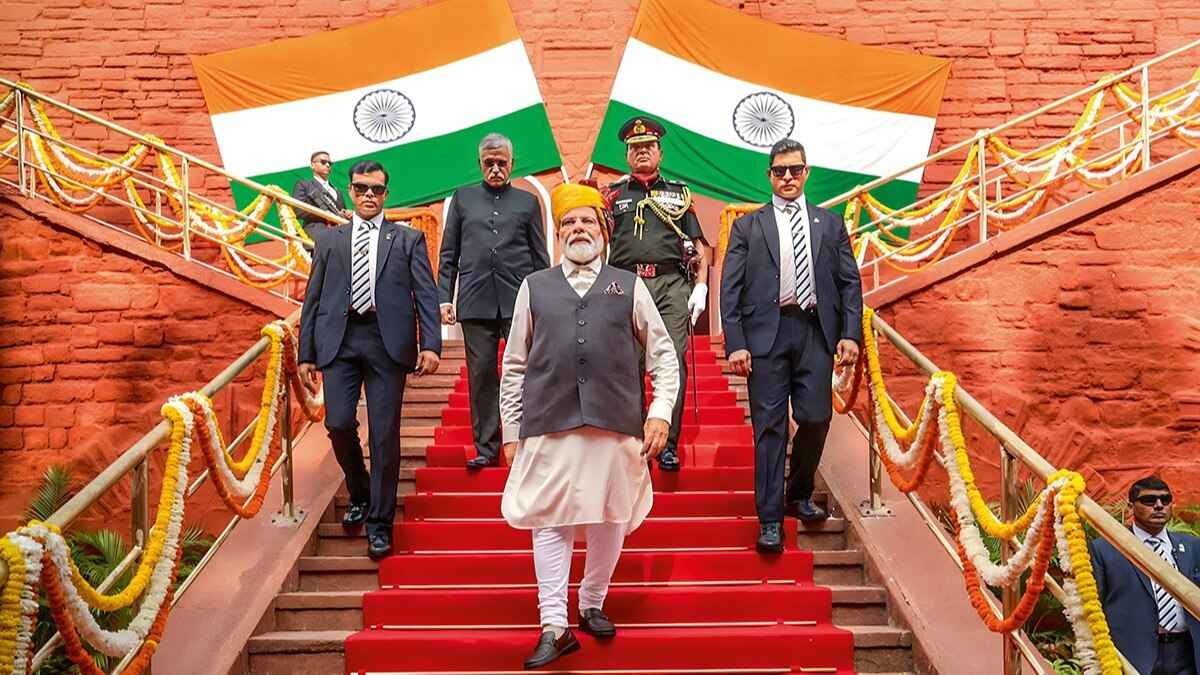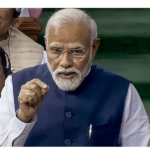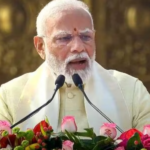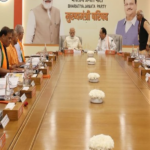Indian Prime Minister Narendra Modi is in a strong position to win the national elections in 2024 as a result of the triumph of the ruling Bhartiya Janata Party (BJP) in three of the five state election The results of the state elections in India have provided the ruling Bhartiya Janata Party (BJP) and Prime Minister Narendra Modi with a head start in preparation for the parliamentary election that is scheduled to take place at the beginning of 2024.
Before the general election that is due to take place in April 2024, the final set of elections that took place were the legislative elections in five different states. These states were Rajasthan, Madhya Pradesh, Chhattisgarh, Telangana, and Mizoram.
While it is true that the outcomes of state elections do not necessarily correspond to those of national elections, the fact remains that the outcomes of state elections have a psychological impact on political parties and voters. In Hindi-speaking north India, the Bhartiya Janata Party (BJP) has won three of these states.

Because of this, Modi has been able to say that the “hat-trick” that the BJP has achieved, which consists of winning three state elections, suggests that he will also achieve “a hat-trick in 2024” when he seeks a third term in government.
The Congress party was able to secure a significant victory in Telangana, which was the only southern Indian state that organized elections. The results of the states in the south of India have been distinct from those of the states in the north for a considerable amount of time.
Attempts by the Bhartiya Janata Party (BJP) to impose the Hindi language on the people in south India, to the detriment of their own languages, have angered the voters in that region. In addition, they do not hold Modi in high esteem or subscribe to the ideology of the Hindu majority at this time.
The Zoram Peoples’ Front (ZPF), a new political organization, has made its debut in the state of Mizoram, which is located in the northeastern region. The Congress, on the other hand, is going to have to compete directly and head-to-head with the BJP in the states that are located in the north of India.
Observers of politics were eager to see whether or not Modi’s electoral magic, which consisted of a combination of demagoguery and ideological speech, was still intact before to the state elections. To our surprise, it was the case.
It would appear that the following are the components that make up his recipe for electoral success: projecting himself above regional party leaders, Hindu majoritarian rhetoric, “Modi guarantees” for increased largesse to the poor and the marginalized, such as tribals and women, and a well-oiled election machinery.
In addition to promoting his persona above that of the state-level leaders throughout the campaign, he also made sitting members of parliament and leaders of the BJP’s central party run for office in constituencies that the BJP had lost in the election that took place in 2018. Because of this, they were driven to battle fiercely for their political existence. In addition, the successful subduing of factionalism was achieved by leaving the door open for the chief minister candidate.
The welfare programs that were already in place at the central government were expanded upon by Modi’s promise of welfare. As a result of the pandemic, the free food distribution program that was first implemented for the poor has been extended until the year 2028. The fact of the matter is that his welfare state simply appeared to be more trustworthy than the social programs that were proposed by the opposition.
Despite the fact that the Congress party had promised to conduct a caste census, which would have guided the distribution of entitlements in proportion to the size of a caste in the population, the pledge was not successful. The disparity between the election methods employed by the BJP and the Congress was also brought to light during these elections.
Within the BJP, candidates were chosen through an internal selection process that was overseen by Prime Minister Narendra Modi and Home Minister Amit Shah.
With regard to the selection of candidates, Congress, on the other hand, relied on psephologists and election consultants for the majority of their surveys rather than depending on comments from party officials at the block, district, and state levels.
At the same time, the Congress party grossly miscalculated the anti-incumbency attitude that was directed against its state administrations in the states of Rajasthan and Chhattisgarh.
Ashok Gehlot, the two-term chief minister of Rajasthan, insisted on fielding over 90 percent of his outgoing MPs despite the fact that they were visibly unpopular. This was in direct opposition to the leadership of the national government.
As a result of the BJP’s attempt to depict the state leadership of the Congress as being anti-tribal, the campaign was successful in rural parts of Chhattisgarh, which has a population that is largely tribal. In each of the three north Indian states, the campaign of the Congress was considerably hampered by the presence of factionalism inside the state Congress groups.
Successes in state elections provide Modi with a head start for the year 2024.
Both the trust in Modi’s electoral magic and the leadership of Rahul Gandhi, the scion of the Gandhi dynasty that controls the Congress party, have been put to the test by the state elections. Additionally, the elections have further strengthened the belief in Modi’s electoral magic. It would appear that his primary platform, which was opposition to the “divisive politics” of the BJP, was not successful in convincing the majority of voters.
Rahul Gandhi’s capacity to steer the Congress party to electoral victory in 2024 will be called into question once more as a result of the dismal performance of the Congress party.
Due to the fact that its national footprint is decreasing, the Congress party will have a more difficult time maintaining its central role within the INDIA (Indian National Developmental Inclusive Alliance) bloc, which is the opposition party. Regional parties within the bloc are already beginning to compete with one another for more space. On the other hand, the game for the year 2024 is not yet over.
In those states in north India where it already holds all or the majority of the parliamentary seats, the Bhartiya Janata Party (BJP) has won the election. In light of this, the company has a restricted opportunity to increase its total in these states in the year 2024.
Also, in contrast to state elections, which are primarily concerned with local issues, the Bhartiya Janata Party (BJP) will require a pan-India narrative that is capable of swaying people in order to win the national parliamentary election.
The “surgical airstrikes” that India carried out against Pakistan, which is accused of committing acts of terrorism against India, offered that narrative during the general election in 2019. For the year 2024, there is not yet a narrative that can be described as “emotional.”
As of right now, the BJP and Modi continue to be in the lead in the fight of perceptions, despite the fact that its absence from south India continues to be a tremendous obstacle.
Lok Sabha Elections 2024: Narendra Modi may launch rallies in Bulandshar on January 25.










